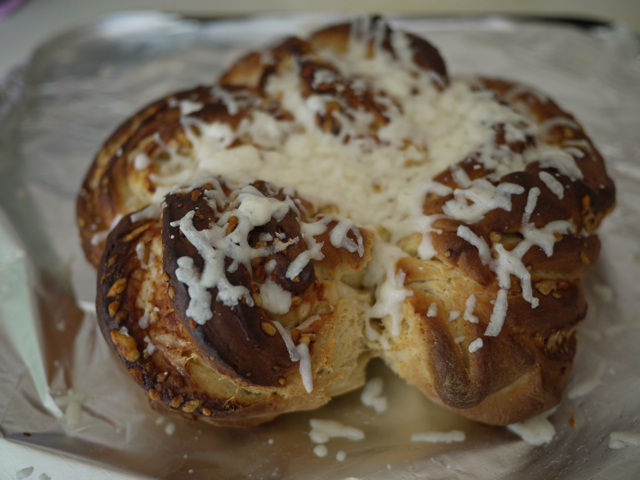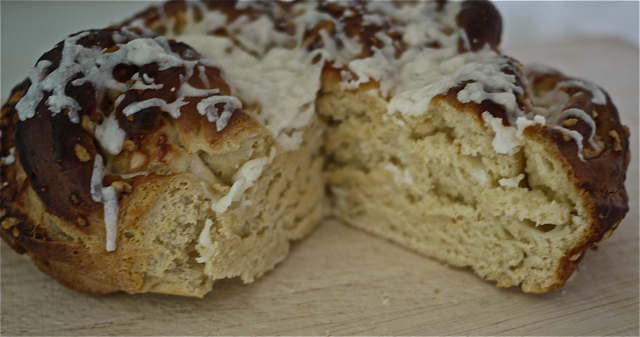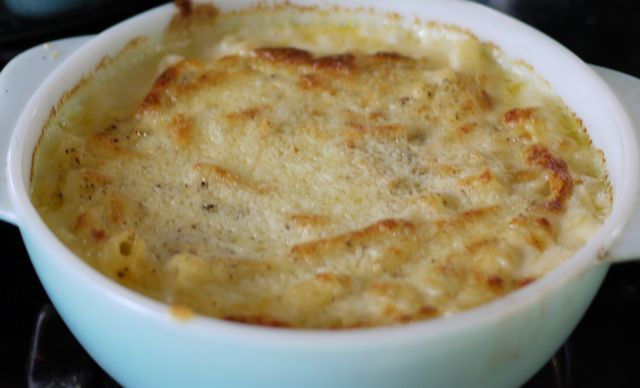Its been a while since I’ve taken part in any of the Fresh from the Oven challenges; either I had the time but the recipe didn’t appeal (usually because it was sweet, I don’t really do sweet baking) or the recipe looked great and I was mad busy. When I first looked at this challenge from Jo’s Kitchen my heart sank to my boots, yet another sweet recipe I thought and rolled my eyes. Then I spotted tucked at the bottom that instead of sugary raisiny chocolately sweetness there was an option with cheese. Yes CHEESE one of my ALL TIME favourite foodstuffs.

I still left making it to the last day though, now there’s a surprise! So this morning I was dashing about making sure I had the right ingredients. Naturally my instinct to not follow ANY recipe to the letter immediately sprang into action and instead of getting some cheddar at the shops (which they had) I was drawn in by some hard goats cheese from Lancashire and bought that instead. This may have something to do with the fact that cheddar, even really good cheddar, is not really that high up my list of favourites but Lancashire most definitely is.
So off I set to make the recipe. The original recipe does not give full instructions for the savoury version so this is my adaptation (note I did half of these quantities). You can see the original recipe here.
Savoury Kringel
Ingredients (Makes 1 large loaf)
- Dough
- 40g fresh yeast (I used 1 sachet fast action yeast for ½ the flour)
- 1tbsp sugar
- 250ml milk, lukewarm (I had to add about another 10ml to my 125ml as the dough was too dry)
- 2 egg yolks
- 50g butter, melted
- 600-700g flour (I used 300g of strong white bread flour)
- I didn’t add any salt as I know my cheese was very salty.
- Filling and topping: 4oz grated hard strong cheese such as cheddar
Method
Mix the yeast and sugar in a bowl. Add the lukewarm milk and egg yolks, then mix in the flour and melted butter and knead well. Shape the dough into a ball, cover the bowl with a tea towel and leave to rise in a warm place for 30 minutes. (I did three fast Dan Lepard style kneads over a 1 hour rise)
Preheat oven to 200°C/Gas 6. Dust your work surface with flour (I used oil I never use flour). Take the dough out of the bowl, knock it back and roll out to a thickness of 1cm (mine was prob less than 1cm). Sprinkle about 2/3 of the grated cheese over the rolled out dough.
Roll up the dough like a swiss roll and cut it in half with a sharp knife (lengthways). Starting from the uncut end, plait the dough, lifting each half over the other in turn. Finally, shape the plaited bread into a B shape (mine was circular as I only had half the quantity) and transfer to a greased baking tray. Bake for about 25 minutes or until golden.
Once cooked turn off the oven, sprinkle the bread with the rest of the cheese and put it back in the cooling oven for 5-10 mins until the cheese melts. Allow to cool fully and serve.

Was it good, yes. Will I make it again, I might. I think it would be good with soup (we had a chunk with salad). It looks rather attractive and it is easy to make so it would be a good loaf to make if you have guests. I’m not 100% sure I like savoury filling that much with an egg enriched dough as I find the taste and texture a little too cakey with the savouriness, but that’s just me.










 Add
Add 
 I was pretty pleased with the result, the leek flavours showed through well and they were soft enough but still with some bite, the cheese contrasted with them nicely and had a good tang and the salad leaves (dressed with just a little extra virgin rapeseed oil) made for a nice soft balance. I think probably the whole goats cheese was a little too much as the egg flavour was a bit lost so when I make this again I’d probably scale back to ½ of the cheese.
I was pretty pleased with the result, the leek flavours showed through well and they were soft enough but still with some bite, the cheese contrasted with them nicely and had a good tang and the salad leaves (dressed with just a little extra virgin rapeseed oil) made for a nice soft balance. I think probably the whole goats cheese was a little too much as the egg flavour was a bit lost so when I make this again I’d probably scale back to ½ of the cheese.